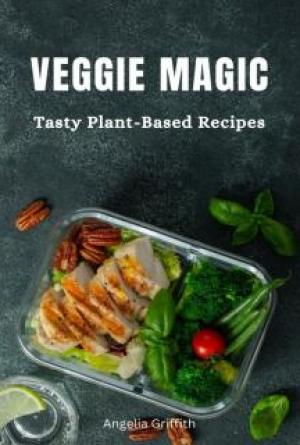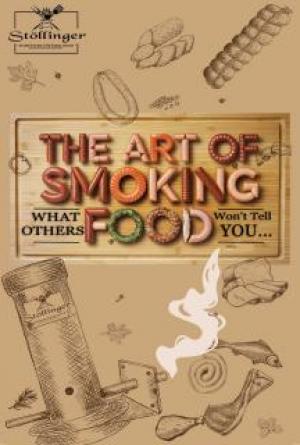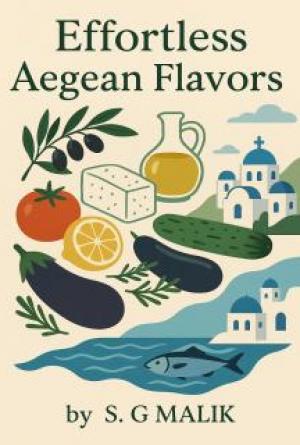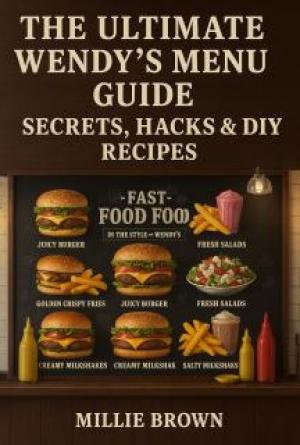Introduction about Cake
Cake is a form of sweet dessert that is typically baked. In their oldest forms, cakes were modifications of breads, but cakes now cover a wide range of preparations that can be simple or elaborate, and that share features with other desserts such as pastries, meringues, custards, and pies.
Typical cake ingredients are flour, sugar, eggs, butter or oil or margarine, a liquid, and leavening agents, such as baking soda or baking powder. Common additional ingredients and flavourings include dried, candied, or fresh fruit, nuts, cocoa, and extracts such as vanilla, with numerous substitutions for the primary ingredients. Cakes can also be filled with fruit preserves, nuts or dessert sauces (like pastry cream), iced with butter cream or other icings, and decorated with marzipan, piped borders, or candied fruit.

Cake is often served as a celebratory dish on ceremonial occasions, such as weddings, anniversaries, and birthdays. There are countless cake recipes; some are bread-like, some are rich and elaborate, and many are centuries old. Cake making is no longer a complicated procedure; while at one time considerable labor went into cake making (particularly the whisking of egg foams); baking equipment and directions have been simplified so that even the most amateur cook may bake a cake.
Cakes are broadly divided into several categories, based primarily on ingredients and mixing techniques.
Although clear examples of the difference between cake and bread are easy to find, the precise classification has always been elusive. For example, banana bread may be properly considered either a quick bread or a cake.
The cake we realize today isn't equivalent to it was in the seventeenth Century. As the year's progressed bakers and chefs alike started changing the manner in which a cake was made. Changes have not exclusively been made to the formula of a cake yet we have changed its utilization. These days cakes are utilized to celebrate a birthday, a wedding, and sometimes utilized similarly as a treat for individuals to enjoy.

First Bakery in India
The very first bakery in India was found by a malayali named Babu in Thallassery. The First bakery in India was started by ' Mampally Bapu' and Sons. 'MampallyBapu' who started a biscuit company in 1880 attracted the foreigners by his sweet products. He studied the taste of cake from bakers from England and made biscuits and bread by the neighbor’s cooperation.

20th December 1883 has an important role in Bakery industry of India. The English officer Brown brought a cake from England to Bapu. Bapu just smelt it and understood its composition and ingredients. Thus cake was baked by Bapu in 1883.
Bapu handed over his biscuit company to his son-in-laws. Mampally Gopalan who got the biscuit company at Thalassery, then handed it to his son Mampally Narayanan who's sons now doing Bakery business inside and outside Kerala.
Different Types of cakes
Butter cakes
Butter Cakes are made from creamed butter, sugar, eggs, and flour. Any recipe for cake that begins "cream butter and sugar" is a butter cake. They rely on the combination of butter and sugar beaten for an extended time to incorporate air into the batter. A classic pound cake is made with a pound each of butter, sugar, eggs, and flour. Baking powder is in many butter cakes, such as Victoria sponge. The ingredients are sometimes mixed without creaming the butter, using recipes for simple and quick cakes. Different types of cake batter within the butter cake family include chocolate, white, yellow and marble; for white and yellow cakes coloring typically depends on whether they have whole eggs, or extra egg yolks in them (yellow cake) or egg whites only (white cake).

Butter cake recipe:
Ingredients:
- 250g butter, softened
- 1 cup caster sugar
- 2 teaspoons vanilla essence
- 3 eggs
- 2 1/2 cups self-raising flour
- 2/3 cup milk
- icing sugar mixture, to serve
Method:
Preheat oven to 180°C/160°C fan-forced. Grease and line an 8cm-deep, 19cm (base) square cake pan with baking paper.
Using an electric mixer, cream butter, caster sugar and vanilla in a medium bowl on medium-high speed until light and fluffy.
Add eggs, 1 at a time, beating to combine. Add half the flour. Stir to combine. Add half the milk. Stir to combine. Repeat with remaining flour and milk.
Spread mixture into prepared pan. Bake for 1 hour or until a skewer inserted into the centre comes out clean. Stand in pan for 10 minutes. Turn out onto a wire rack to cool. Dust with icing sugar. Serve.
Pound Cakes
Pound Cakes are the relative of butter cake. It's so called because it can be measured as a matter of proportion: a pound of butter, a pound of sugar, a pound of eggs, and a pound of flour. In some pound cake recipes, you'll see the eggs separated and the egg whites whipped and folded into the batter, to leaven it. It contains no baking soda or baking powder. These cakes are usually very lightly flavored and served plain or topped with a simple glaze or water icing. A pound cake is usually baked in a loaf or Bundt pan. Many coffee cakes, sour cream cakes, and fruit crumb cakes are variations of pound cake.

Pound Cake Recipe:
Ingredients:
- 3 tablespoons milk (skim, low fat, or whole)
- 3 large eggs
- 1-1/2 teaspoons vanilla extract
- 1-1/3 cups cake flour, spooned into measuring cup and leveled with a straight edge
- 3/4 cup sugar
- 3/4 teaspoon baking powder
- 1/4 teaspoon salt
- 13 tablespoons unsalted butter, softened (no need to cut it in pieces)
Method:
1. Preheat the oven to 350°F and set an oven rack in the middle position. Lightly grease an 8-in x 4-in x 2½-inch loaf pan with butter or nonstick cooking spray. Dust with flour, shaking off any excess. (Alternatively, use a nonstick cooking spray with flour in it, such as Baker’s Joy or Pam Baking Spray with Flour.)
2. In a medium bowl, whisk together the milk, eggs, and vanilla until just combined.
3. In the bowl of an electric mixer fitted with the paddle attachment (or with a hand mixer), place the flour, sugar, baking powder, and salt. Mix on low speed for about 30 seconds or until blended. Add the butter and half of the egg mixture. Mix on low speed until the dry ingredients are moistened. Increase the mixer speed to medium (high speed if using a hand mixer) and beat for one minute. Scrape down the sides of the bowl. Add the remaining egg mixture, in 2 separate additions, beating about 30 seconds after each addition to combine. Do not over-mix. (The batter may have a slightly curdled or grainy appearance -- that's okay.)
4. Scrape the batter into the prepared pan and smooth the top with an offset spatula or the back of a spoon. Bake for 50 to 55 minutes, or until the cake is golden brown and a thin wooden skewer or toothpick inserted into the center of the cake comes out clean.
5. Place the cake on a wire rack to cool for about 10 minutes. Then remove the cake from the pan and cool completely on a wire rack. Wrap the cooled cake in plastic wrap or store in a large sealable plastic bag.
6. The wrapped pound cake will keep for several days at room temperature, for one week when refrigerated.
7. Freezer-Friendly Method: The cake can be frozen for up to 3 months. After it is completely cooled, double-wrap it securely with aluminum foil or plastic freezer wrap, or place it in a heavy-duty freezer bag. Thaw overnight on the countertop before serving.
Sponge cakes (or foam cakes) are made from whipped eggs, sugar, and flour. They rely primarily on trapped air in a protein matrix (generally of beaten eggs) to provide leavening, sometimes with a bit of baking powder or other chemical leaven added as insurance. Sponge cakes are thought to be the oldest cakes made without yeast. An angel food cake is a white sponge cake that uses only the whites of the eggs and is traditionally baked in a tube pan. The French Genoise is a sponge cake that includes clarified butter. Highly decorated sponge cakes with lavish toppings are sometimes called gateau, the French word for cake.

Sponge cake recipe:
Ingredients:
- 225g softened butter
- 225g golden caster sugar
- 4 large eggs
- ½ lemon, zested
- 1 tsp vanilla extract
- 225g self-raising flour
- Splash of milk
- Optional fillings of lemon curd, jam, lightly whipped cream
- icing sugar for dusting
Method:
- Heat oven to 180C/160C fan/gas 4, butter and line the base of two 20cm spring-form cake tins with baking parchment.
- Using an electric whisk beat the butter and sugar together until pale and fluffy. Crack the eggs in one at a time and whisk well, scraping down the sides of the bowl after each addition. Add the lemon zest, vanilla, flour, milk and a pinch of salt. Whisk until just combined then divide the mixture between the two tins.
- Bake in the centre of the oven for 25-30 mins until a skewer inserted into the middle of each cake comes out clean. After 10 mins remove the cakes from their tins and leave to cool completely on a wire rack. Fill how you like. My personal favourite is a good dollop of lemon curd and some fresh cream, then dust the top with icing sugar. Will keep for 3 days.
In Italy and France, a sponge cake is called genoise; in genoise, whole eggs are beaten with sugar until they're thick and ribbony, and then flour (and sometimes butter) is added and the batter is baked; the result is wonderful baked in a round cake pan and simply frosted, but genoise is also pliable enough to be baked in a jelly-roll pan and rolled up into a roulade. Genoise lacks much assertive flavor of its own, but it is often used to construct layered or rolled cakes when a lighter texture than a butter cake is desired. To add flavor and moisture, genoise cake layers are always moistened with a flavored syrup, and they are often sliced into thin horizontal layers and stacked with rich fillings such as buttercream. These layer cakes, common in the coffeehouses of Europe, are called "European-style" to distinguish them from American-style butter layer cakes, which generally have fewer, thicker layers.

Ingredients:
- 1 cup sifted cake flour
- 2 tablespoons white sugar
- 1 pinch salt
- 2 tablespoons unsalted butter, melted
- 4 eggs
- 1/2 cup white sugar
- 1 1/2 teaspoons vanilla extract
Instructions:
- Preheat oven to 350 degrees F (175 degrees C). Grease one 8 inch round cake pan. Line with parchment paper and grease it as well. Lightly flour pan and paper.
- Sift together the flour, 2 tablespoons sugar, and salt onto a piece of wax paper.
- Place the eggs into a mixing bowl set over a pan of hot (not boiling) water. Add the 1/2 cup sugar to the eggs and whisk until the mixture feels warm (not hot) to the touch, about body temperature. Place the bowl onto a mixer and beat on medium speed until the mixture becomes pale yellow in color and falls off the end of the whisk attachment in long ribbons. Add the vanilla. Add about 1/3 of the flour mixture to the beaten egg and fold in. Continue to add the remainder of the flour, folding it in each time.
- Place about 1 cup of the batter into the bowl containing the melted butter and combine the butter with the batter. Add this back to the main batter and fold it in. Pour the batter into the prepared pan.
- Immediately bake at 350 degrees F (175 degrees C) for about 25 minutes or until the top is a light brown. Cool in pan on a rack about 10 minutes and then invert onto a rack. It is best to invert it again onto another rack so that it cools with the top up. Let cool completely before cutting or frosting.
Biscuit Cakes:
Biscuit (always pronounced the French way as bees-kwee) cakes are another type of sponge cake containing both egg whites and yolks, but, unlike genoise, the whites and yolks are whipped separately and then folded back together. This creates a light batter that's drier than a genoise but holds its shape better after mixing. For this reason, it's often used for piped shapes such as ladyfingers. If baked in a tube pan like an angel food cake, it makes a very chewy sponge cake that was popular in the early 20th century but has since fallen out of favor. However, it's still known in a slightly different form as the classic Passover sponge cake, in which the flour is replaced by matzoh cake meal and potato starch.

Biscuit Cakes Recipe:
Ingredients:
- 275g/10 oz Butter
- 150ml/¼pt Golden Syrup
- 225g/8 oz Chocolate (good quality, at least 60% cocoa)
- ½ x 400g packet of Digestive Biscuits, roughly crushed
- ½ x 400g packet of Rich Tea Biscuits, roughly crushed
- 1 packet of Maltesers
- 125g/4 oz Shamrock Walnuts, Brazil Nuts and/or Almonds (optional)
- 125g/4 oz Shamrock Sultanas, Apricots and/or Cherries (optional)
Instruction:
- Line a 15cms/6" round cake tin or a 2lb loaf tin with a double layer of greaseproof paper.
- Melt the butter, syrup and chocolate in a pan over a low heat. Stir to make sure all the ingredients are well mixed together.
- Add the biscuits, maltesers and fruit and nuts, if used. Stir well.
- Transfer to prepared tin. Level it on top and press down well to avoid air gaps. Allow to get cold and hard. Wrap completely in greaseproof paper and store in a fridge.
Angel Food Cakes
Angel Food Cakes are made with egg whites alone and no yolks. The whites are whipped with sugar until very firm before the flour is gently folded in, resulting in a snowy-white, airy, and delicate cake that marries beautifully with fruit. Most angel food cakes have a spongy, chewy quality derived from their relatively high sugar content and the absence of egg yolks. Baked in ungreased two-piece tube pans, angel food cakes are cooled by being inverted, since this type of cake would collapse if cooled right-side-up in the pan or if removed from the pan while still warm. There's also no butter here, so the cake is fat free.

Angel Food Cakes Recipe:
Ingredients:
- 1 1/4 cups cake flour
- 1 3/4 cups white sugar
- 1/4 teaspoon salt
- 1 1/2 cups egg whites
- 1 teaspoon cream of tartar
- 1/2 teaspoon vanilla extract
- 1/2 teaspoon almond extract
Method:
- Beat egg whites until they form stiff peaks, and then add cream of tartar, vanilla extract, and almond extract.
- Sift together flour, sugar, and salt. Repeat five times.
- Gently combine the egg whites with the dry ingredients, and then pour into an ungreased 10 inch tube pan.
- Place cake pan in a cold oven. Turn the oven on; set it to 325 degrees F (165 degrees C). Cook for about one hour, or until cake is golden brown.
- Invert cake, and allow it to cool in the pan. When thoroughly cooled, remove from pan.
This fairly recent American creation was invented by a salesman who sold the recipe to General Mills, which spread the recipe through marketing materials in the 1940s and 1950s. A classic chiffon cake is kind of a cross between an oil cake and a sponge cake. It includes baking powder and vegetable oil, but the eggs are separated and the whites are beaten to soft peaks before being folded into the batter. This creates a cake with a tender crumb and rich flavor like an oil cake, but with a lighter texture that's more like a sponge cake. Chiffon cakes can be baked in tube pans like angel food cakes or layered with fillings and frostings.

Chiffon Cake Recipe:
Ingredients:
- 2 1/2 cups (280 gr) cake flour
- 1 1/4 tsp (5 gr) baking powder
- 1/4 tsp (2 gr) baking soda
- 3/4 tsp (3.6 gr) Morton kosher salt or table salt (use 1 1/2 tsp if using Diamond kosher)
- 1 1/2 cups (294 gr) granulated sugar
- 5 TBSP (70 gr) unsalted butter, melted and cooled slightly
- 1/2 cup (118 ml) vegetable, canola, or avocado oil
- 1 cup (237 ml) buttermilk, room temperature
- 2 tsp vanilla extract
- 6 large egg yolks, room temperature
- 3 large egg whites, room temperature
- 1/4 cup (50 gr) granulated sugar
Instructions:
- Prep: Preheat the oven to 350 F (177 C). Prepare a tube pan by greasing only the bottom of the pan and not the sides or the tube. Measure out all of your ingredients for each section of the recipe and keep each grouping together to help with the flow of the recipe.
- Mix the Dry Ingredients: Sift the dry ingredients into a large bowl and then whisk together to combine. Set aside.
- Mix the Wet Ingredients: In a separate medium bowl, whisk together all of the wet ingredients and set aside.
- Make the Meringue: In the bowl of a stand mixer fit with the whisk attachment or with a hand mixer, beat the egg whites on medium/high speed until they start forming medium peaks. With the mixer still running, slowly stream in the sugar and keep beating until you reach stiff peaks.
- Combine the Components: Pour the wet ingredients into the dry ingredient bowl and stir together with a rubber spatula. Once the dry ingredients are saturated, add about 1/2 cup of the egg whites into the mixture and stir it in completely to lighten the batter. Next add in 1/2 of the rest of the egg whites and gently fold them in being careful not to deflate them. Add in the rest of the egg whites and fold them in gently until completely combined. Pour the batter into the prepared pan.
- Bake at 350 F (177 C) for 40-50 minutes, until a tester comes out with moist crumbs clinging to the tester.
- Cool & Serve: Set the cake pan on a cooling rack and allow it to cool completely before turning it out of the pan. Serve plain, dusted with powdered sugar, with a powdered sugar glaze, or with whipped cream.
- Store cooled cake covered at room temperature for up to 4 days.
Notes:
- It is traditional for this cake to be baked in a tube pan because it can climb up the center, resulting in a very spongy texture. However, this cake can also be baked in 2- 8" or 9" round cake pans and be stacked as a layer cake. Adjust baking time to 20-22 minutes when baking it in round cake tins.
Baked Flourless Cakes
These include baked cheesecakes and flourless chocolate cakes. For easy removal, they're often made in a spring form pan, though some can also be made in regular round layer cake pans. Often the filled pan is placed in a larger pan that's half-filled with water to insulate the delicate, creamy cake from the oven's strong bottom heat, which might give the baked cake a porous rather than silky texture. This is called baking the cake in a water bath.

Baked flourless cakes Recipe (Flourless Chocolate Cake):
Ingredients:
Cake
- 1 cup semisweet or bittersweet chocolate chips
- 1/2 cup (8 tablespoons) unsalted butter
- 3/4 cup granulated sugar
- 1/4 teaspoon salt
- 1 to 2 teaspoons espresso powder, optional
- 1 teaspoon vanilla extract, optional
- 3 large eggs
- 1/2 cup unsweetened cocoa powder, Dutch-process cocoa preferred
Glaze
- 1 cup semisweet or bittersweet chocolate chips
- 1/2 cup heavy cream
Instructions
- Preheat the oven to 375°F. Lightly grease a metal 8" round cake pan; cut a piece of parchment to fit, grease it, and lay it in the bottom of the pan.
- To make the cake: Put the chocolate and butter in a microwave-safe bowl, and heat until the butter is melted and the chips are soft. Stir until the chips melt, reheating b


















